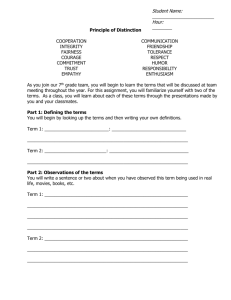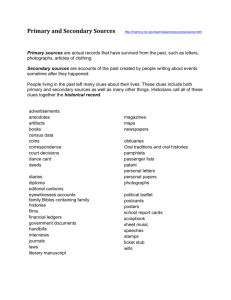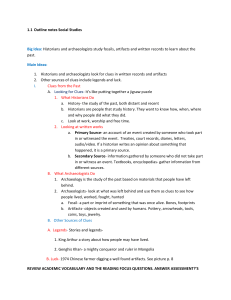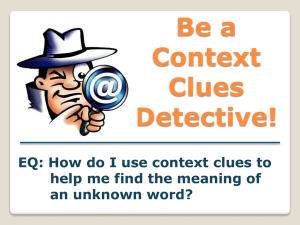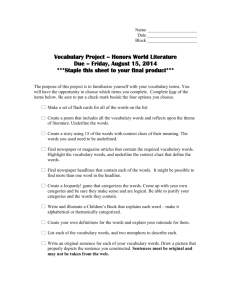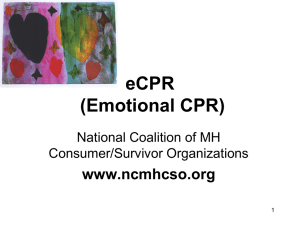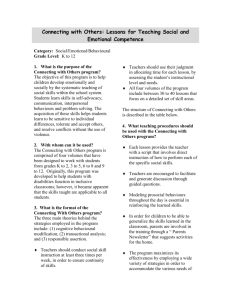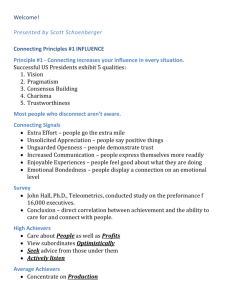Reading Ahead
advertisement
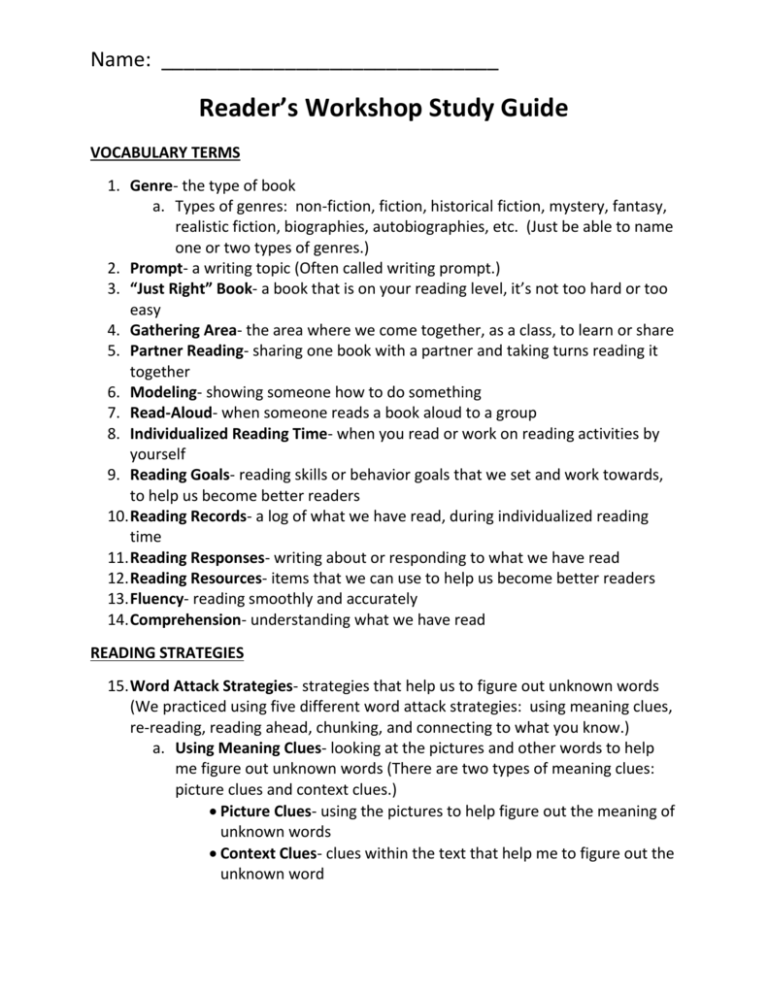
Name: ______________________________ Reader’s Workshop Study Guide VOCABULARY TERMS 1. Genre- the type of book a. Types of genres: non-fiction, fiction, historical fiction, mystery, fantasy, realistic fiction, biographies, autobiographies, etc. (Just be able to name one or two types of genres.) 2. Prompt- a writing topic (Often called writing prompt.) 3. “Just Right” Book- a book that is on your reading level, it’s not too hard or too easy 4. Gathering Area- the area where we come together, as a class, to learn or share 5. Partner Reading- sharing one book with a partner and taking turns reading it together 6. Modeling- showing someone how to do something 7. Read-Aloud- when someone reads a book aloud to a group 8. Individualized Reading Time- when you read or work on reading activities by yourself 9. Reading Goals- reading skills or behavior goals that we set and work towards, to help us become better readers 10. Reading Records- a log of what we have read, during individualized reading time 11. Reading Responses- writing about or responding to what we have read 12. Reading Resources- items that we can use to help us become better readers 13. Fluency- reading smoothly and accurately 14. Comprehension- understanding what we have read READING STRATEGIES 15. Word Attack Strategies- strategies that help us to figure out unknown words (We practiced using five different word attack strategies: using meaning clues, re-reading, reading ahead, chunking, and connecting to what you know.) a. Using Meaning Clues- looking at the pictures and other words to help me figure out unknown words (There are two types of meaning clues: picture clues and context clues.) Picture Clues- using the pictures to help figure out the meaning of unknown words Context Clues- clues within the text that help me to figure out the unknown word Name: ______________________________ b. Re-Reading- after figuring out an unknown word, I re-read the whole sentence to understand it and to read fluently c. Reading Ahead- if I don’t know what a word means, I can read ahead to see if that helps me figure out the meaning d. Chunking- breaking a word into chunks and saying it slowly. Then, blending the parts back together to say the whole word. (This is very similar to sounding out unknown words.) e. Connect to What You Know- thinking about what I already know or similar words, to help figure out an unknown word 16. Comprehension Strategies- strategies that help me to stop and think about what I am reading, which helps me to understand what I have read (We practiced using seven different comprehension strategies: connecting, picturing, summarize, figure out, guessing, wondering, and noticing.) a. Connecting- connecting the words on the page to what you already know (While reading, you can make three different types of connections: connecting to other books, connecting to your own experiences, connecting to the world.) b. Picturing- trying to imagine the events of the book in your mind, as you are reading (Visualizing is another name for this strategy.) c. Summarize- stopping at the end of a page or chapter to retell the main events of the story d. Figure Out- thinking about how different parts of the story connect to each other, in order to understand why things are happening (Inferring is another name for this strategy.) e. Guessing- thinking about what will happen next (Predicting is another name for this strategy.) f. Wondering- asking questions about the information in the book and trying to figure out the answers as you read (Questioning is another name for this strategy.) g. Noticing- taking time to observe details in the text, to help you understand what is important (Determining What is Important is another name for this strategy.) ***Remember the quiz is on Tuesday, September 30th. It will be a combination of short answer, multiple-choice, true/false, matching, and fill-in the blank.***

